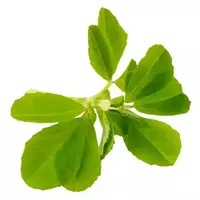Hay fenugreek (fenugrek)

The beneficial properties of fenugreek or fenugreek have been known to mankind since ancient times. And in our time, the seeds of the plant Fenugrek hay (fenugrek) were used as a drug. However, not only useful, but also distinctive taste properties of fenugreek (fengrek) play an important role. Without a condiment made from fenugreek seeds, it is simply impossible to prepare some Indian cuisine. Remarkably, fenugreek can be used as an independent seasoning, as well as an ingredient for spicy mixtures.
For example, the famous spicy mixture of hop-suneli, which is traditional for Georgian cuisine, among other spicy herbs, includes fenugreek or fenugreek. The hay fenugreek or Trigonella foenum-graecum is an annual plant that belongs to the Legume family. The distribution area of the plant can be considered the territory of Eastern Europe, Turkey, Central Asia, the Caucasus, Iraq, as well as Iran.
Often fenugreek is found in the arid climate of Egypt or Ethiopia. It is noteworthy that fenugreek is cultivated as a spicy plant. In addition to the full scientific name assigned to the plant, there are other folk names for the plant. For example, fenugrek or shambhala, as well as chaman and methi, are called fenugrek. As a rule, the fenugreek of hay (fenugrek) does not exceed 60 centimeters in length. Fenugreek seeds. which are considered valuable natural material are located in beans that develop from the inflorescences of the plant.
Benefits of fenugreek
The main benefit of fenugreek (fenugreek) lies in the chemical composition of the plant, which is enriched with various useful medicinal compounds. The benefit of fenugreuca is that the plant serves as a raw material for the production of steroid saponins, which are used for the production of the medical drug Pasenin. This drug has antisclerotic effects on the human body. A distinctive feature of fenugreek can be considered an intense aroma that exudes all the components of the plant.
Although fenugreek is used in medicine and pharmacology, this is primarily a spicy plant that plays an important role in cooking. The bowl of all European countries uses ground fenugreek seeds as a spice. However, in India, whole fenugreek seeds are included in the recipe of many national dishes. For example, traditional vegetarian Indian dal soup is prepared using fenugreek seeds. In addition to seeds, fresh shoots of the plant are also used in cooking, for example, as a seasoning for meat dishes.
For the manufacture of famous green cheeses, fenugreek shoots are used. However, the scope of the plant does not end there either. The chemical composition of fenugreek contains a fairly large amount of galactomannan substance, which is better known as fenugreek gum, which is actively used in the food industry as a food additive - a stabilizer and Ye417 emulsifier.
fenugreek 10 kCal
Energy value of hay fenugreek (fenugreek) (Ratio of proteins, fats, carbohydrates - ju):
Proteins: 1.1 g (~ 4 kCal)
Fats: 0 g (~ 0 kCal)
Carbohydrates: 1.1 g (~ 4 kCal)
Energy ratio (b | y): 44% | 0% | 44%
 Español
Español Français
Français Português
Português Русский
Русский 简体中文
简体中文 繁體中文
繁體中文 日本語
日本語 한국어
한국어 العربية
العربية Türkçe
Türkçe Қазақ
Қазақ Deutsch
Deutsch Italiano
Italiano Українська
Українська
